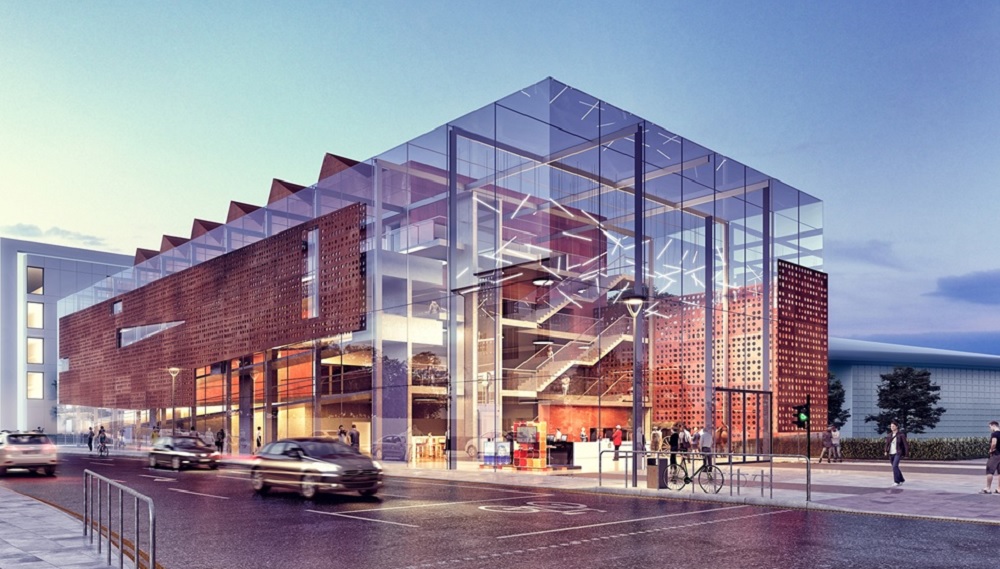Second military museum could be relocated to Cardiff as part of controversial Tiger Bay development

A second military museum could be relocated to Cardiff as part of a controversial development in Tiger Bay.
Plans to relocate the Military Medicine Museum from a barracks in Aldershot to a purpose-built four-storey building in the bay have already met vocal opposition from politicians and community groups.
Now it has emerged that the site could also house the Museum of Army Music, which is currently based in London, in a bid to make the exhibition more attractive to visitors.
“The Museum is also in discussion with the Museum of Army Music with a view to merging its collections at the proposed Cardiff facility,” states a release issued by a Cardiff-based public relations agency.
“The combined collection would tell the story of the evolution of military health and music and how both have played a major role in civil society and in particular the life of service personnel and their families around the world.”
The development comes after concerns were raised about the financial viability of the original project following the closure of the Dr Who experience despite a £1 million subsidy from Cardiff Council.
The Military Medicine Museum, which made a £163,000 loss last year, has based its business plan on attracting 225,000 paying visitors by its second year.
That would make it the sixth most-visited paid tourist attraction in Wales, ahead of Caernarfon Castle, Zip World or Big Pit, according to government figures.
The Techniquest science centre in Cardiff Bay, received 150,000 visitors in 2018.
And the US Army Medical Museum in Washington attracts just 50,000 visitors a year despite free entrance, resident Lyn Eynon pointed out in one of 30 planning objections made to Cardiff Council.
“If public subsidy is not provided, there is a serious risk that the Museum will not be viable and will have to close, leaving an empty building on what is today a valued park. It may not even be completed,” he warned.
Criticism
It is difficult to gauge potential interest in such an exhibition from the Museum of Army Music’s current operation.
Based at the Army Music Corps headquarters in Twickenham, its prize exhibit is a bugle sounded at the charge of the light brigade and is open to visitors for just two hours a week or by appointment.
Its latest accounts show it made just £1,696,95 from tours and shop sales between 2018/19.
The inclusion of a second military exhibit also risks increasing political objections to the scheme, the original plan having already been criticised by prominent voices.
Labour’s Jenny Rathbone has said “a military museum doesn’t seem right for Cardiff Bay”, while Plaid Cymru’s Leanne Wood stated: “We don’t need a military museum in Butetown.”
Musician Gwenno wrote on Twitter: “How about reopening the Butetown History & Arts Centre which celebrated the lives and work of the people of the area rather than glorifying death and destruction @cardiffcouncil?”
In response to them and others, Cardiff Council leader Huw Thomas wrote: “Let’s be clear, it’s a Military MEDICINE Museum. I can see why people might object to a museum that glorified war, but I’m not sure a museum with displays such as Florence Nightingale’s carriage, dental and vet equipment, and recent deployments to combat Ebola is doing that.”
The Military Medicine Museum has responded to criticism by hiring London-based advertising agency run by a former director of Saatchi & Saatchi, Isobel.
“Isobel has been hired as brand consultants. It’ll work with stakeholders to develop a new positioning and brand for MMM, and help to raise the necessary funding,” reported industry website Mediashotz.
“In time, the agency will also lead on launching the new MMM attraction to consumers.”
Support our Nation today
For the price of a cup of coffee a month you can help us create an independent, not-for-profit, national news service for the people of Wales, by the people of Wales.





